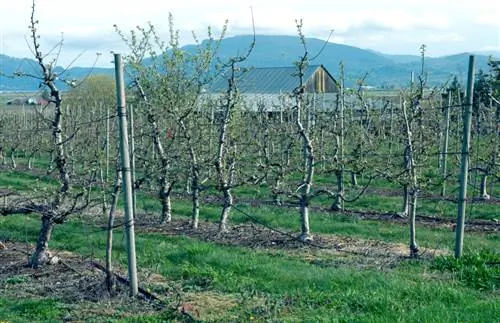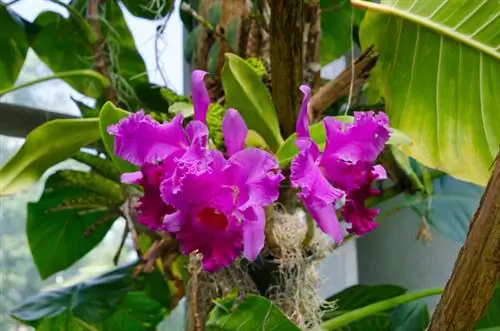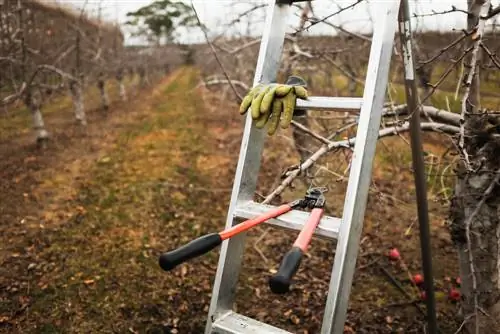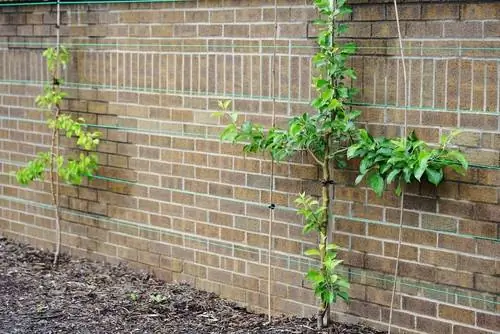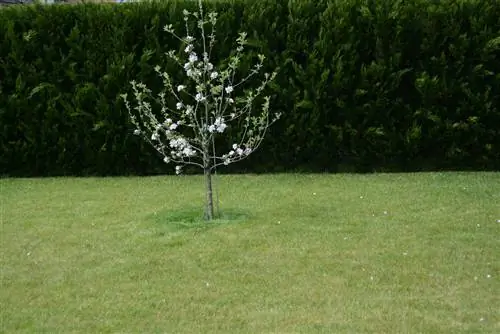- Author admin [email protected].
- Public 2023-12-16 16:46.
- Last modified 2025-06-01 06:02.
If you want to have lush blooming roses in your garden, you have to plant and care for them accordingly. For many varieties, this also includes the correct tying. You should tie up climbing roses and ramblers in particular, but also many shrub and bed roses and of course standard roses and secure them by fastening them. This not only ensures a beautiful growth habit, but also ensures that the beautiful flowering plant does not break off or be torn down in the next storm.

Why and how should you tie roses?
Tying roses serves to maintain the beautiful growth habit and protect the plant from storm damage. Use slightly elastic materials such as raffia, sisal or special plastic cords and tie climbing roses horizontally.
Tie up roses - with what? Suitable materials and their advantages and disadvantages
There are not only different techniques for tying roses, but also a variety of materials. In addition to twine and cord, you can also use various clamps, although when choosing you should pay attention not only to the color, but also to elasticity and durability. Green cords are often almost invisible, while clamps are visible in many cases. Beige raffia ribbon is also one of the materials that is hardly noticeable. Binding materials should be slightly elastic, but not too flexible - after all, you want to secure your roses firmly and not have to re-tie them again and again. Good natural and therefore compostable materials are raffia or sisal, but special plastic cords are also suitable. On the other hand, it is better to stay away from metal wires and the like, because they are too inflexible and are difficult to remove if in doubt - as a result, injuries to the rose bush cannot be ruled out.
Always tie climbing roses horizontally
The long shoots of climbing roses and ramblers should always be directed horizontally. However, that doesn't mean that your plant can no longer grow taller, because you proceed as follows when tying it:
- Direct the shoots evenly horizontally to the left and right from a central shoot.
- The shoots point slightly upwards, towards the light.
- New shoots are directed out to the floor above
- and tied horizontally again.
In this way you create an even branching and thus a harmonious overall picture.
Tall trees need support
Not only climbing and rambler roses should be secured by tying them up, standard roses as well as very sprawling shrub and bed roses also require fastening. While standard stems are best tied to a plant stick - especially if they have just been planted and are therefore not yet firmly rooted - many shrub and bed roses can also be attached to climbing aids such as obelisks, trellises, trellises, rose arches, etc. This is especially true for the historic roses, which often grow very luxuriantly - some of these shrub roses behave more like a climbing rose under the right conditions.
Tip
If possible, do not choose metal materials as a climbing aid or as a mounting base, as these get very cold in winter and can cause cold damage to your plant.


